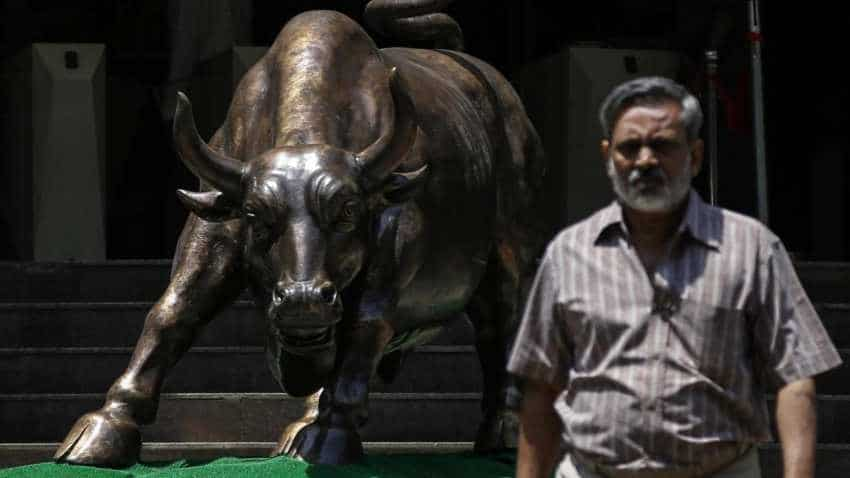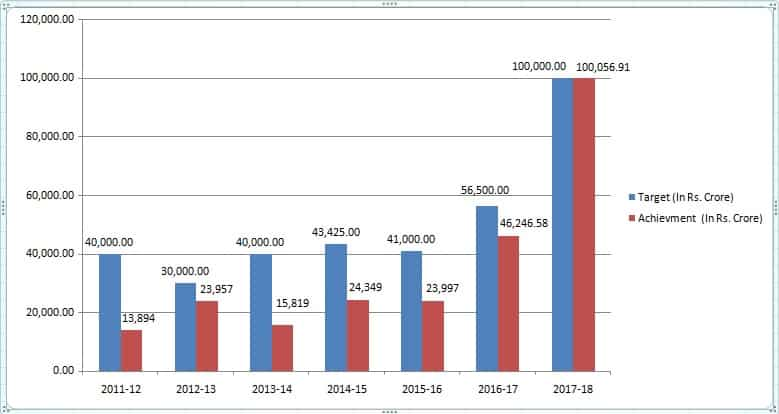Budget 2019: PSB ETFs coming? After, Bharat 22, CPSE Exchange Traded Funds, a new disinvestment pattern can emerge

Disinvestment target has been on full swing by Indian government, with stake sales taking place in various state-owned companies either by IPOs, OFS, buybacks and others. Not only that, to fulfill its disinvestment target, government had also launched Bharat-22 and CPSE Exchange Traded Funds (ETFs). Every year on Budget, the government lays out new disinvestment target, which by the way, they have managed to achieve successfully in the last two fiscals. Interestingly, a new trend of disinvestment is being expected which can see reality or at least some clarity in the upcoming Union Budget 2019. This one is important for those who are looking to invest in public sector banks (PSBs) like SBI, PNB, Bank of India, Canara Bank, Union Bank and much more.
A little track record!
Disinvestment target has been a difficult task to achieve, as the government has missed their budgeted target between FY12-FY17, until came the FY18 period. Surprisingly, former Finance Minister Arun Jaitley in FY18 dropped the bombshell by laying out disinvestment target of a massive Rs 1 lakh crore for this fiscal. At one point, what seemed highly unachievable for so long, was actually made reality as the government achieved Rs 100,056.91 crore via disinvestment in FY18, slightly overshooting the budgeted estimates.

(Image source: DIPAM)
Led by the FY18 success, Centre announced disinvestment target of Rs 80,000 crore for FY19 during last budget. Once again, the target has been achieved with government bagging Rs 84,972.16 crore proceeds from disinvestment in FY19. Major disinvestment proceeds came from CPSE and Bharat ETFs, where stake sale involved in companies like ONGC, Coal India, National Thermal Power, Indian Oil, Bharat Electronics, Oil India, NBCC, NLC India, REC and Power Finance.
What is disinvestment?
Typically, the word disinvestment indicates sale of asset from a government either partly or fully owned enterprises. Reason behind disinvestment comes as a way to raise capital, privatise inefficient PSUs which have been dragging government resources. Further, the move is adopted in order to reduce financial burden on government, improve public finances, create market discipline and competitiveness, encourage wider ownership and enhance funds.
The practise also helps in curbing rising fiscal deficit, financing infrastructure development, further investment in economic growth and much more.
What’s new in Budget 2019?
Looks like CPSE ETFs and Bharat-22 ETFs, have paved way for a new form of state-owned Exchange Traded Funds which brings PSBs at center stage.
CPSE, Bharat-22 ETFs:
Over time, the government has managed to reduce their holding in PSUs with Bharat-22 and CPSE ETFs raising more than Rs 700 billion via various offerings. An internal limit of 52% has been set up by the government, which balances their ownership and opens gate for further investments.
For example - According to Edelweiss Securities, CPSE ETF has REC with wt of ~6% which may undergo rebalance as government does not own the stake directly anymore (sold to POWF). GoI holding in IOC is near to 52%. (both these stocks attribute 25% weight in CPSE ETF). Similarly the BHARAT 22 Index has couple of stocks where GoI does not have enough equity to divest. Currently B22 has an AUM of ~Rs 8,500 crore and CPSE ETF holds AUM of Rs 10,500 crore.
Historically post the announcement of launch of ETF, the counters see some hedging activity resulting in to futures trading at discount!
PSB ETFs on its way:
Yogesh Radke, Sriram Velayudhan and Abhilash Pagaria, analyst at Edelweiss Securities said, “After the success of B22 and CPSE ETF we expect the launch of the PSB ETF in the upcoming quarter for routing the disinvestment program. PSB ETF is expected to comprise of 100,000 GoI - Disinvestments 1 01-Jul-19 Edelweiss Vital Insights disinvestment program. PSB ETF is expected to comprise of prominent banks like SBI, BOI, BOB, CANBK, UNIONBK, ALBK etc through an Index.”
PSB ETFs are largely expected to be similar to the way Bharat-22 and CPSE ETFs are.
The trio said, “Though most of these PSB stocks are not yet out of the woods in terms of NPAs, some sweeteners like recapitalisation laced with positive guidance can generate investment interest. Moreover most of the PSU banks have started seeing subtle signs of recovery in price lately. Government could spell out some guidance on the same in the impending budget.”
On Wednesday, the S&P Bharat-22 ETF closed at 3,776.70 up by 21.39 points or 0.57%. The index also touched an intraday high of 3,780.79. In last one year, this index has risen by nearly 15%, as it was trading near 3,301-levels on July 03, 2019.
In the interim Budget 2019, the disinvestment target has been raised to 90,000 crore for FY20. Well, what will be the new target set by FM Nirmala Sitharaman will be keenly watched. However, PSB ETFs will be one major move eyed by investors during disinvestment announcement.
Get Latest Business News, Stock Market Updates and Videos; Check your tax outgo through Income Tax Calculator and save money through our Personal Finance coverage. Check Business Breaking News Live on Zee Business Twitter and Facebook. Subscribe on YouTube.
07:14 PM IST











 Government revises definition of strategic disinvestment under Income Tax Act of 1961
Government revises definition of strategic disinvestment under Income Tax Act of 1961 Disinvestment process of RINL is under progress: Steel Ministry
Disinvestment process of RINL is under progress: Steel Ministry No separate mention of disinvestment proceeds in Budget 2023-24
No separate mention of disinvestment proceeds in Budget 2023-24 Government gets multiple EoIs for privatising NMDC Steel: DIPAM Secretary Tuhin Kanta Pandey
Government gets multiple EoIs for privatising NMDC Steel: DIPAM Secretary Tuhin Kanta Pandey Union Budget 2023: What is disinvestment and why it is done ?
Union Budget 2023: What is disinvestment and why it is done ?